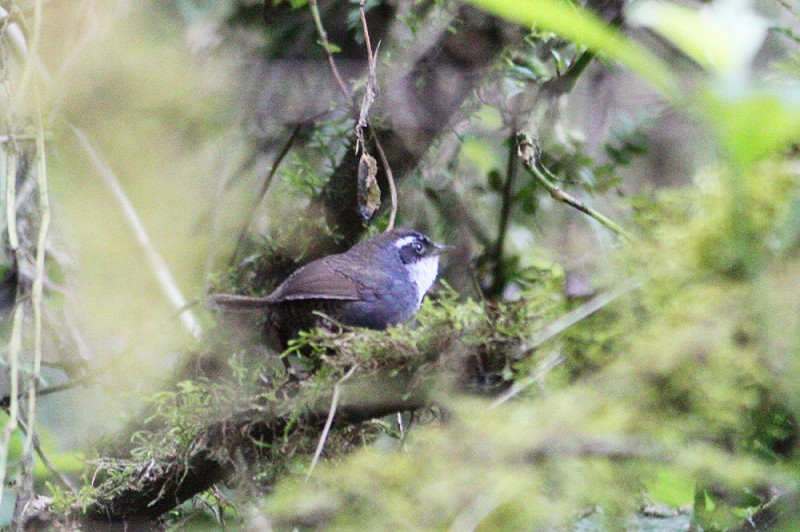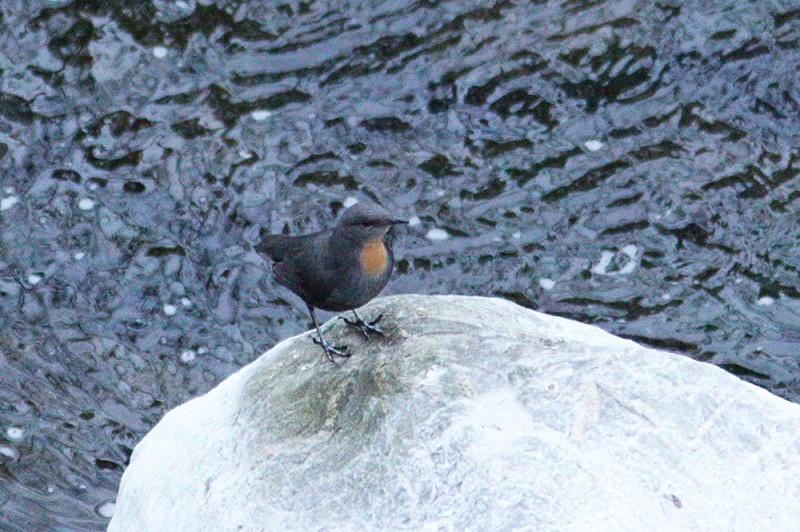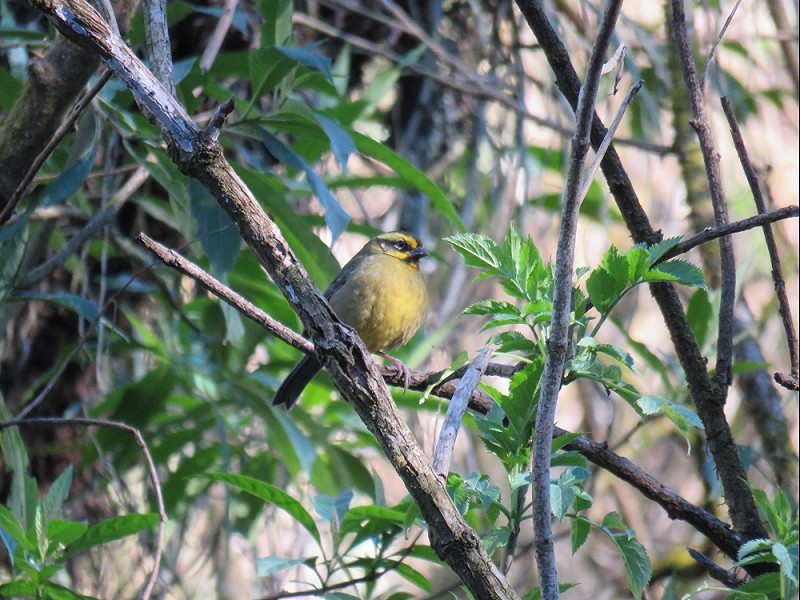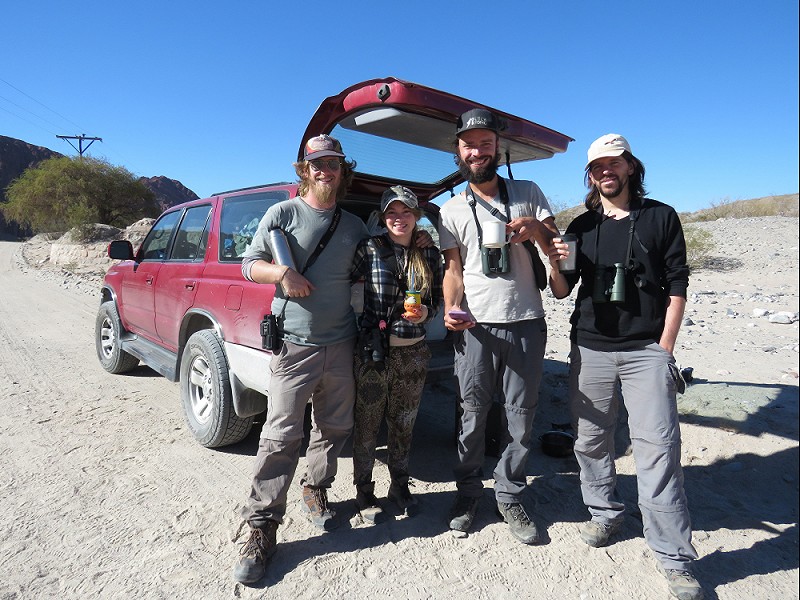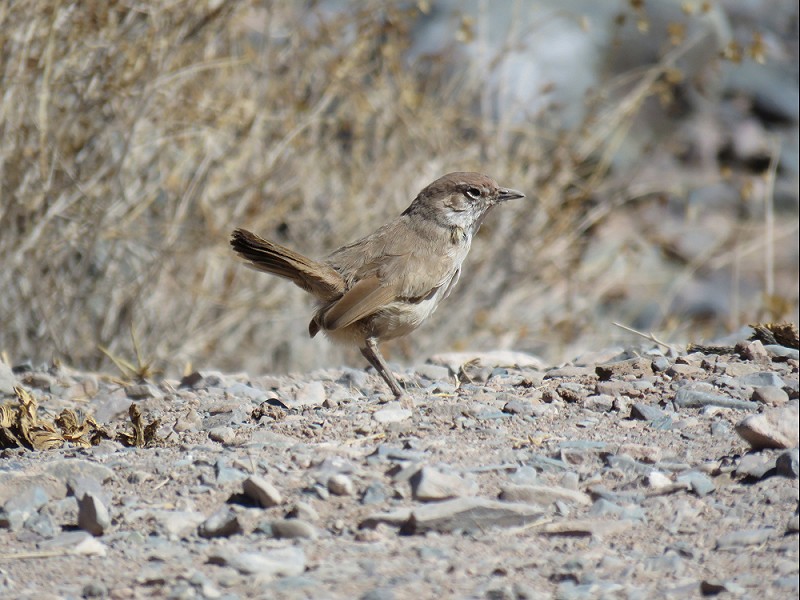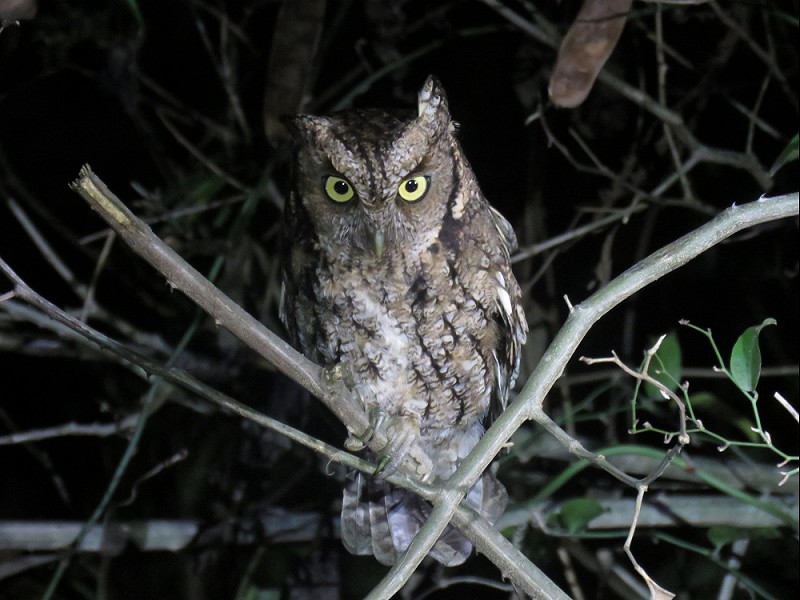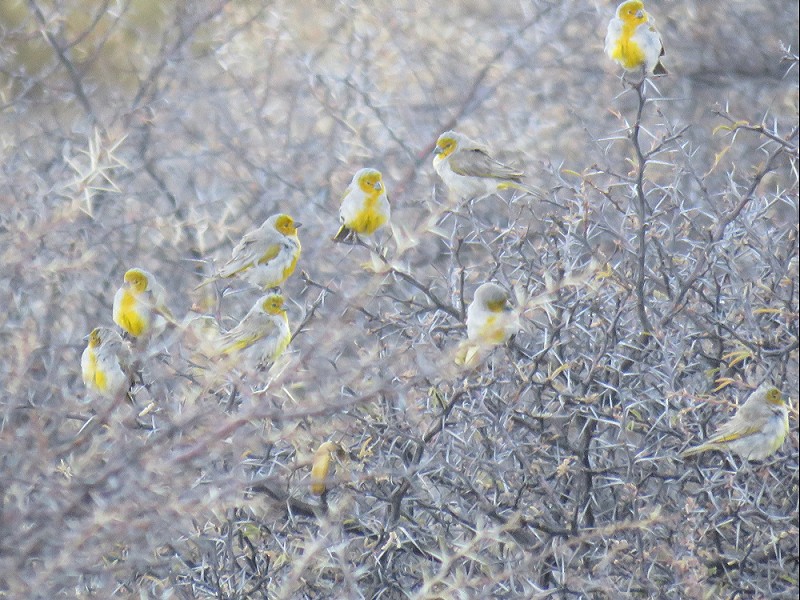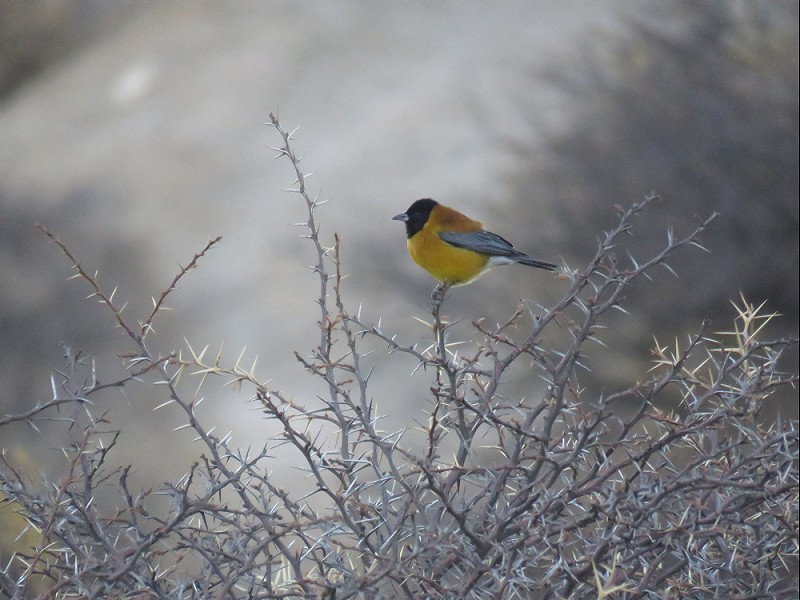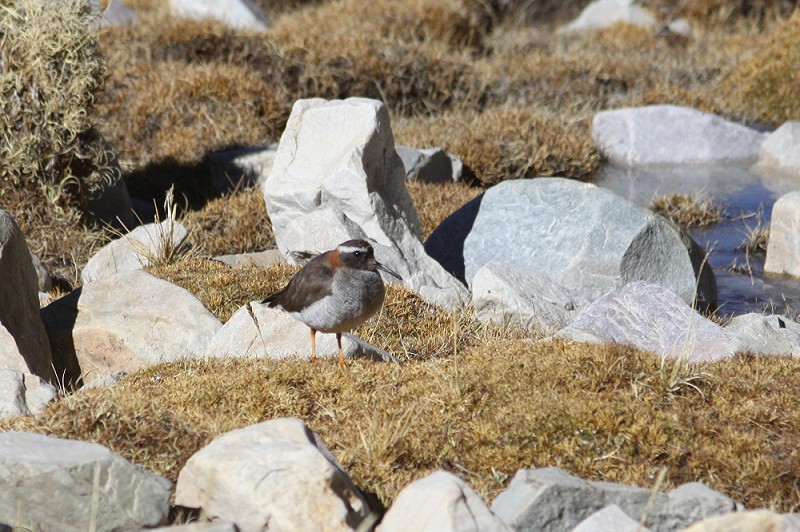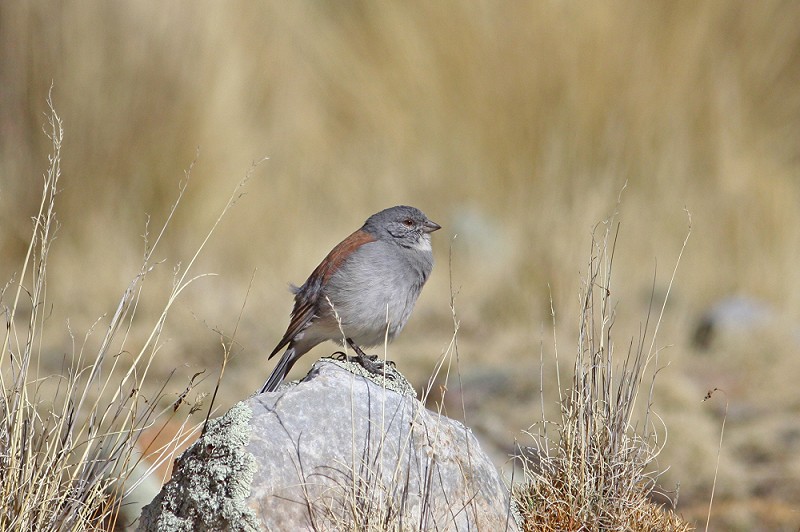August 12 - 16: Argentina (2)
21 augustus 2016 · Arjan Dwarshuis · 5975 × bekeken
PLEASE MAKE A DONATION NOW!
world.observation.org/arjan
www.arjandwarshuis.com/#biggestyear
August 12th FROM THE YUNGAS TO THE DESERT
ast night we had arrived in San Miguel de Tucuman, where we got a heart-warming welcome from Giselle Mangini and her boyfriend Facundo Gandoy, two ornithologists and fanatic birdwatchers who would take Ies and me on a five day mega road trip through northwestern Argentina.
After spending the night at Giselle’s parents place we left around 5 AM and drove into the mountains above Tucuman. While it was slowly getting light we found ourselves amidst lush ‘Yungas’ cloud forest and down below us ran a fast flowing river. Here we would look for our biggest target of the trip, the endangered Rufous-throated Dipper. This bird can sometimes be difficult to find, but not this time! Within two minutes Ies had found a pair and for over half an hour we were treated to a Dipper-fiesta! Yes!
While watching the Dippers, Facundo found a calling White-browed Tapaculo and after some playback we had awesome views of this skulker. Other highlights at this location were the endemic Yellow-striped Brush Finch and several Mountain Wrens.
As we drove further up the landscape changed into pre-puna grasslands and not long thereafter we made our second planned stop near a gully. Here we quickly found the endangered Tucuman Mountain-finch, another big target!
Next we made a tough, but very scenic hike towards a territory of the rare Scribble-tailed Canastero. The one hour walk was more than worth it, because eventually we had fantastic views of a pair. Other good birds along the way were Puna Canastero and Buff-breasted Earthcreeper.
From here it was downhill again towards the intermontane desert environments near Cafayate, along the way making a lot of stops to look for birds.
As we set up camp I counted an incredible 56 new species for the day, our roadtrip had started with a bang!
August 13th ACROSS THE ANDES!
After packing up our tent we drove a short distance to some cactus-dominated landscape near Cafayete to look for the endemic White-throated Cachalote. The bird gave us a bit of a run-around, but eventually we had great looks of a pair, our last Cachalote species was in the bag.
From Cafayete it was a long drive across a dusty road – picking up Brown-backed Mockingbird along the way - before we finally started climbing up into the mountains above Salta. The landscape gradually changed from desert to puna grassland, the scenery was absolutely breathtaking.
We sought our first target in an area dominated by large boulders and rocks, the adequately named Rock Earthcreeper. As is often the case with furnarids a short burst of playback was enough to persuade the bird to show itself, another great member of a fantastically diverse family. Another good find here were three wintering Cinnamon-bellied Ground-tyrants.
From about 3400 meters we started to descent again until we reached the first maquis scrub, here we could find a very interesting set of habitat specific targets, the Rufous-bellied Saltator, Straight-billed Earthcreeper and Maquis Canastero. Due to Giselle’s and Facundo’s fantastic preparation and site info we managed to find all these targets.
We struggled with finding one target, the Zimmer’s Tapaculo, but just before it got dark, at the last gully we tried we finally got a response which resulted in fantastic views.
We ended this perfect day with a suiting finish, two amazingly showy Yungas Screech-owls.
Around midnight we arrived at Giselle’s and Facundo’s house in Salta where I connected with the Wi-Fi network. I received some devastating news… My friend Dušan Brinkhuizen, who I would be birding with for two weeks in Ecuador, had horrifically broken his leg and ankle. Naturally he was in the hospital, physically and mentally almost succumbing from pain. I felt sick hearing this and I hope that my friend will recover as soon as possible. Hold in there buddy! In the meantime I will have to come up with a backup plan for Ecuador, with just five weeks till my arrival in Quito…
August 14th CALILEGUA NATIONAL PARK
So far the trip that Giselle and Facundo have put together surpasses all expectations, but this morning they told us that we would take things to the next level. Since we were doing so well, they decided that we would travel all the way to the Bolivian border to look for some very little known birds that barely creep into Argentina, exciting stuff!
First however, we would visit more familiar territory, namely the dry forest above Salta and the infamous Calilegua NP.
Near Salta our main target was the range restricted Tucuman Parrot, but several potential future splits – Great Pampa Finch and Stripe-headed Sparrow – make this region even more special. It took us a fair bit of searching – with Dot-fronted Woodpecker, Sclater’s Tyrannulet and White-faced Dove as welcome distractions – before we eventually found a perched Tucuman Parrot.
After picking up some empanadas it was time to drive north towards Calilegua NP, where we arrived around mid-day. During the heat of the day birding was tough, but still we managed to find Ochre-cheeked Spinetail and Plumbeous Tyrant by the skin of our teeth.
We drove all the way up to the highest part of this stunning park whish reminded me in some way of the fabled Peruvian Manu Road with pristine forest covering steep hillsides. We birded until dusk – we still had to drive a huge distance north – and managed to find Glossy-black Thrush, Yellow-collared Macaw and White-browed Brushfinch.
August 15th HIGH ALTITUDE PUNA LAKE BIRDING
We had spent the night the night in a small village half way to Laguna de los Pozuelos and at daybreak we continued our journey towards this stunning high altitude puna lake.
The landscape along the way was absolutely breath-taking with rugged mountains, snowy peaks and Vicugnas and Guanacos dotted across the puna grassland.
When we arrived at the lake we noticed that the water level was alarmingly low, maybe as a result of El Nino or possibly simply because of global warming. Dead birds were littered across the shore of the lake, clearly there was a lack of food.
Birds however were plentiful, probably because the remaining water in Los Pozuelas was the only water source in the area. We found some amazing species on the flat desert puna bordering the lake like Lesser (Puna) Rhea, Golden-spotted Ground-dove and the beautiful Andean Avocet.
Luckily we quickly found our main targets on the lake itself, three species of Flamingo – Jameson’s- , the endangered Andean- and the more common Chilean Flamingo – and best, a juvenile Horned Coot. The biggest surprise here was a Semipalmated Sandpiper which turned out to be about the 5th record for Argentina and the first for the entire southern part of the Andes Mountains!
From Laguna de los Pozuelos we continued our journey north to Yavi, a small village just five kilometers from the Bolivian border. Here we found the range-restricted Citron-headed Yellow-finch and as dusk fell over this scenic little town we checked in at a hostel to spend the night.
August 16th TO 4500 METERS AND DOWN AGAIN!
Already our last day in the rugged mountains of northwestern Argentina, a sad thought since we had such a great time birding with Giselle and Facundo. Later today I would also have to say goodbye to Ies with who I’ve been birding for the last five weeks. Together we saw close to 1100 species in those five weeks, many of them beautiful, rare and/or endangered.
For the grand final in the northwest we decided to drive to a 4500 meters high pass above Yavi village, to look for the range restricted Red-backed Sierra-finch. As we made our way up to the pass the landscape was incomparably beautiful, even the Himalaya couldn’t beat this dramatic setting of mountains, puna grassland and glaciers.
Not long after we cleared the pass we found the first Red-backed Sierra-finches, but the real mega was still to come… I scoped a random Andean bog when I suddenly saw a male Diademed Plover! Wow! This rare high-altitude wader was new for both Giselle and Facundo and they’d told me earlier that this was in fact their most wanted species! We spent an hour with what turned out to be a pair of Diademed Plovers, a memorable experience and a fantastic finish to our five days in northwestern Argentina!
From the pass we drove down and continued all the way to Jujuy, here it was time to say goodbye to Giselle and Facundo and after our domestic flight to Buenos Aires I was on my own once more. I will miss you Ies, you were an outstanding travel companion!
Arjan Dwarshuis
PLEASE MAKE A DONATION NOW!
world.observation.org/arjan
www.arjandwarshuis.com/#biggestyear


